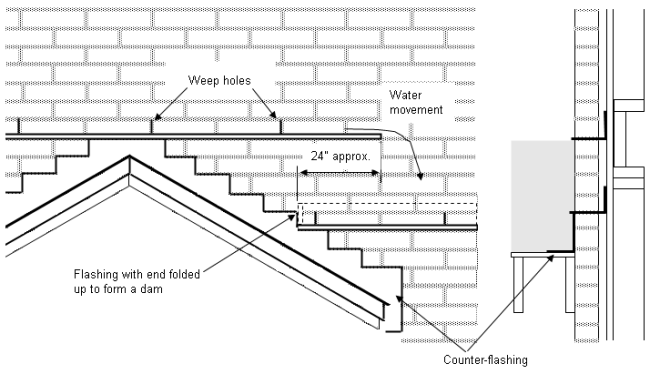Problem: Water Penetration Through The Brick Veneer.
The trapping of water which passes through the veneer into the wall assembly can result in corrosion of ties and shelf-angle connectors or, if driven through the exterior sheathing, can result in deterioration of wall framing and damage to interior finishes as previously discussed in "Generic Problems".
Cause: Improper flashing and counter-flashing installation.
Solutions:
- Minimize reliance on caulk. Provide flashing and counter-flashing at all intersections between roofs and walls. This will accommodate all differential movement between the two surfaces and prevent the entry of water as shown in Figure 45.

Figure 45 - Flashing Over Intersecting Roof.
- Install stepped flashings along the slope of the roof with a bend extending up the wall. Prove a head lap of 3 inches (75 mm) along the slope of the roof. Install counter-flashing to extend 6 inches (150 mm) up the brick veneer. The flashing should be embedded a minimum at 1 inch (25 mm) into the mortar joint and lapped over the base flashing by at least 4 inches (100 mm). Make certain that the base flashing and counter-flashing are the same metal to avoid deterioration caused by electrolysis.
